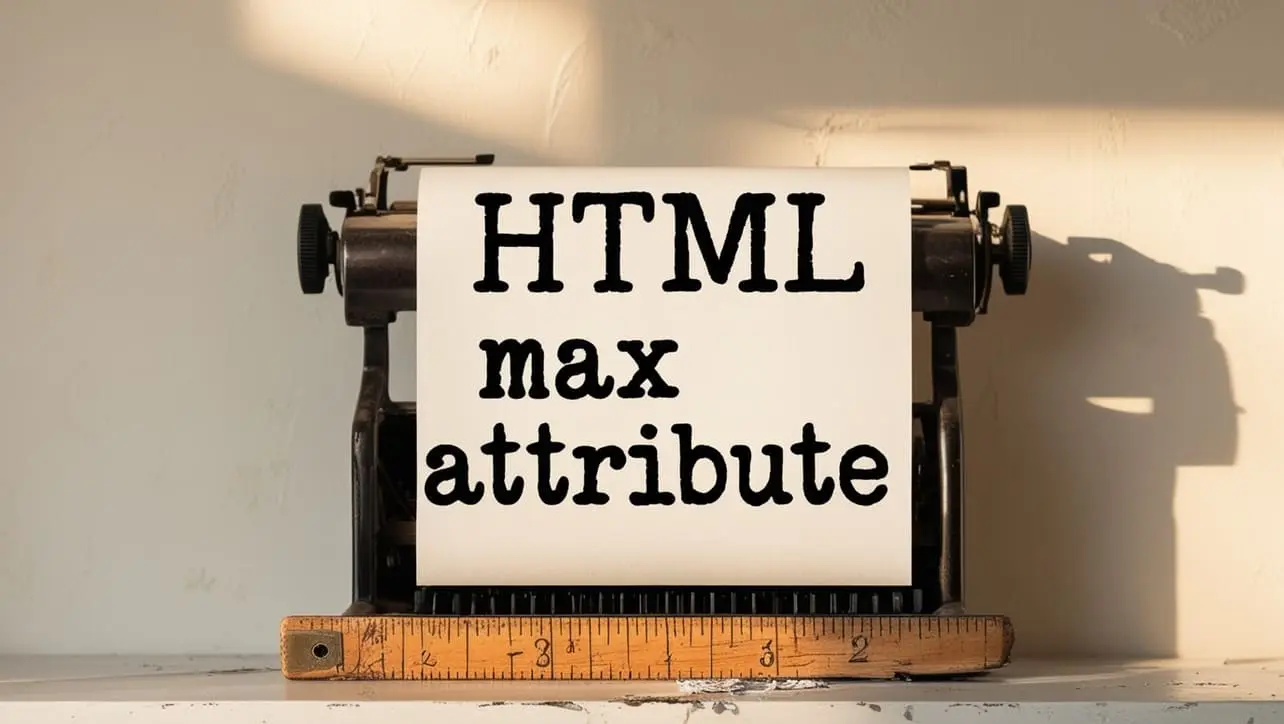
HTML Topics
- HTML Intro
- HTML Basic
- HTML Editors
- HTML CSS
- HTML Tags
- HTML Deprecated Tags
- HTML Events
- HTML Event Attributes
- HTML Global Attributes
- HTML Attributes
- abbr
- accept
- accept-charset
- accesskey
- action
- align
- alt
- archive
- as
- async
- autocapitalize
- autocomplete
- autofocus
- autoplay
- axis
- bgcolor
- border
- cellpadding
- cellspacing
- char
- charoff
- charset
- checked
- cite
- class
- classid
- codebase
- codetype
- color
- cols
- colspan
- compact
- content
- contenteditable
- controls
- coords
- crossorigin
- data
- data-*
- datetime
- declare
- default
- defer
- dir
- dirname
- disabled
- download
- draggable
- enctype
- enterkeyhint
- for
- form
- formaction
- formenctype
- formmethod
- formnovalidate
- formtarget
- frame
- frameborder
- frameset
- headers
- height
- hidden
- high
- href
- hreflang
- hspace
- http-equiv
- id
- inert
- inputmode
- ismap
- kind
- label
- lang
- list
- loop
- low
- max
- maxlength
- media
- method
- min
- multiple
- muted
- name
- novalidate
- onabort
- onafterprint
- onbeforeprint
- onbeforeunload
- onblur
- oncanplay
- oncanplaythrough
- onchange
- onclick
- oncontextmenu
- oncopy
- oncuechange
- oncut
- ondblclick
- ondrag
- ondragend
- ondragenter
- ondragleave
- ondragover
- ondragstart
- ondrop
- ondurationchange
- onemptied
- onended
- onerror
- onfocus
- onhashchange
- oninput
- oninvalid
- onkeydown
- onkeypress
- onkeyup
- onload
- onloadeddata
- onloadedmetadata
- onloadstart
- onmousedown
- onmousemove
- onmouseout
- onmouseover
- onmouseup
- onmousewheel
- onoffline
- ononline
- onpagehide
- onpageshow
- onpaste
- onpause
- onplay
- onplaying
- onpopstate
- onprogress
- onratechange
- onreset
- onresize
- onscroll
- onsearch
- onseeked
- onseeking
- onselect
- onstalled
- onstorage
- onsubmit
- onsuspend
- ontimeupdate
- ontoggle
- onunload
- onvolumechange
- onwaiting
- onwheel
- open
- optimum
- pattern
- placeholder
- popover
- popovertarget
- popovertargetaction
- poster
- preload
- readonly
- rel
- required
- reversed
- rows
- rowspan
- sandbox
- scope
- selected
- shape
- size
- sizes
- span
- spellcheck
- src
- srcdoc
- srclang
- srcset
- start
- step
- style
- tabindex
- target
- title
- translate
- type
- usemap
- value
- width
- wrap
- HTML Comments
- HTML Entity
- HTML Head
- HTML Form
- HTML IndexedDB
- HTML Drag & Drop
- HTML Geolocation
- HTML Canvas
- HTML Status Code
- HTML Language Code
- HTML Country Code
- HTML Charset
- MIME Types
HTML max Attribute

Photo Credit to CodeToFun
🙋 Introduction
The max attribute in HTML is used to set an upper limit or maximum value for certain input elements.
This attribute is commonly employed in conjunction with form elements to restrict user input within a specified range.
Understanding how to use the max attribute can be essential for creating more robust and user-friendly web forms.
🎯 Purpose of max
The primary purpose of the max attribute is to define the maximum allowed value for an input field.
This is particularly useful when dealing with date, time, or number inputs where you want to limit the user's selection to a specific upper bound.
💎 Values
The max attribute accepts different values depending on the type of input:
- Date Inputs: For date inputs, the
maxattribute should be set to a date string in the format YYYY-MM-DD, indicating the maximum allowable date.date-inputs.htmlCopied<input type="date" max="2024-12-31"> - Time Inputs: For time inputs, the
maxattribute specifies the maximum allowed time in the format HH:MM.time-inputs.htmlCopied<input type="time" max="18:00"> - Number Inputs: For number inputs, the
maxattribute sets the upper limit for the numerical value.number-inputs.htmlCopied<input type="number" max="100"> - Datetime Inputs: For datetime inputs, the
maxattribute defines the maximum datetime value.datetime-inputs.htmlCopied<input type="datetime-local" max="2024-12-31T23:59">
📄 Example
Let's explore a simple example of using the max attribute in an HTML form:
<form>
<label for="eventDate">Event Date:</label>
<input type="date" id="eventDate" name="eventDate" max="2025-12-31">
<label for="ticketPrice">Ticket Price:</label>
<input type="number" id="ticketPrice" name="ticketPrice" max="500">
<input type="submit" value="Submit">
</form>🧠 How it Works
In this example, the max attribute is applied to the Event Date input to ensure that users cannot select a date beyond December 31, 2025. Similarly, the Ticket Price input is restricted to a maximum value of $500.
🔄 Dynamic Values with JavaScript
You can dynamically set the max attribute using JavaScript.
This is beneficial when you want to adjust the maximum value based on dynamic conditions or user interactions. Here's a brief example:
<script>
// Dynamically set max value for a number input
document.getElementById("dynamicMaxField").max = 1000;
</script>🧠 How it Works
In this example, the max attribute is applied to the "Event Date" input to ensure that users cannot select a date beyond December 31, 2025. Similarly, the "Ticket Price" input is restricted to a maximum value of $500.
🏆 Best Practices
- Choose appropriate values for the
maxattribute based on the nature of the input and user expectations. - Ensure that the max value makes sense contextually and provides a meaningful constraint for the user.
- Keep in mind that the
maxattribute is a client-side validation and should be complemented with server-side validation for security.
🎉 Conclusion
The max attribute is a valuable tool for defining upper limits on user input in HTML forms.
By incorporating this attribute thoughtfully, you can improve the accuracy of data collection and enhance the overall user experience.
👨💻 Join our Community:
Author

For over eight years, I worked as a full-stack web developer. Now, I have chosen my profession as a full-time blogger at codetofun.com.
Buy me a coffee to make codetofun.com free for everyone.
Buy me a Coffee












If you have any doubts regarding this article (HTML max Attribute), please comment here. I will help you immediately.